This 40-Foot California Waterfall Is So Stunning, People Drive Hours To See It
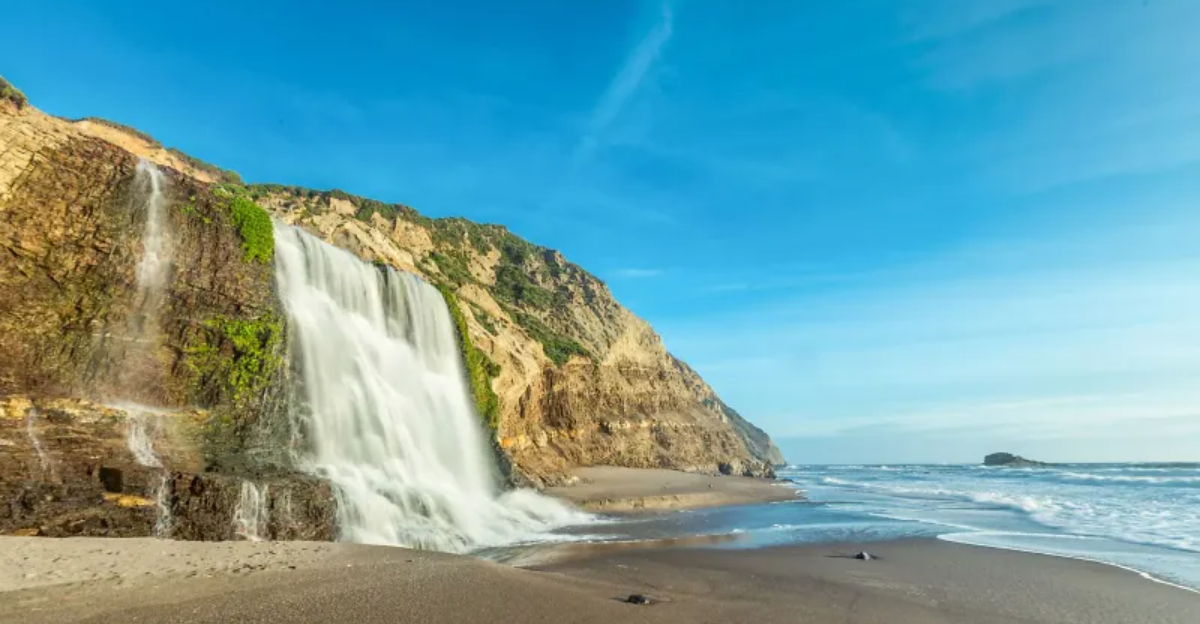
Alamere Falls might just be Northern California’s best-kept secret that everyone somehow knows about. This magical waterfall tumbles 40 feet down rugged cliffs before splashing directly into the Pacific Ocean, creating a scene so breathtaking that hikers gladly trek miles just to witness it.
Located within Point Reyes National Seashore, this natural wonder combines the drama of crashing waves with the elegance of cascading freshwater in a way that feels almost impossible.
1. A Perfect 40-Foot Plunge Straight Into The Pacific

Forty feet doesn’t sound enormous until you’re standing beneath it, watching gallons of water free-fall onto the beach below. The drop creates a misty halo effect that catches sunlight like nature’s own light show.
During peak flow season, the waterfall roars with enough force to drown out nearby conversations. The impact zone constantly shifts the sand beneath, carving temporary pools that change with every tide.
Some visitors describe the experience as witnessing two worlds collide, mountain runoff meeting ocean spray in spectacular fashion.
2. One Of The Only Ocean-Falling Waterfalls In The Entire United States
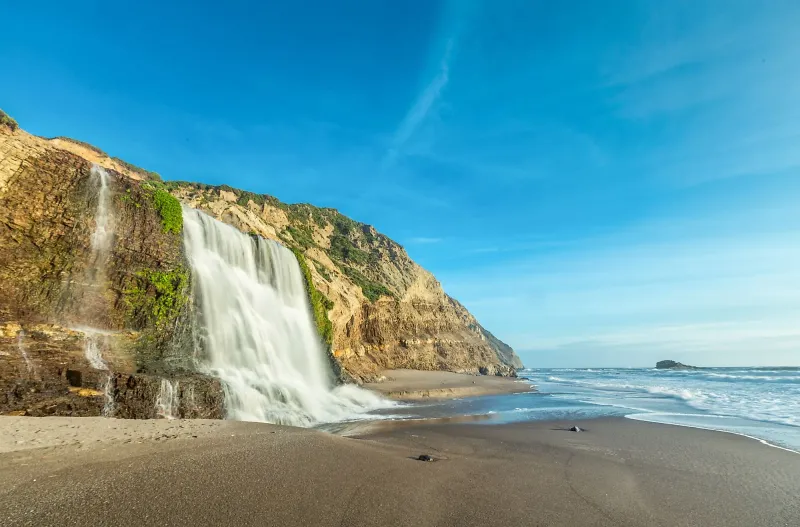
Picture a waterfall that skips the whole river-meets-ocean routine and goes straight for the dramatic entrance. Alamere Falls plunges right onto the sand, mixing freshwater with saltwater in real-time.
Only a handful of waterfalls in America pull off this trick, making Alamere Falls part of an extremely exclusive club. Most waterfalls end up in rivers or lakes, playing it safe.
This one decided to be bold, choosing the Pacific as its final destination. The result? Pure coastal magic that photographers dream about and geologists get genuinely excited discussing.
3. The Journey Takes Time—But The Reward Is Huge
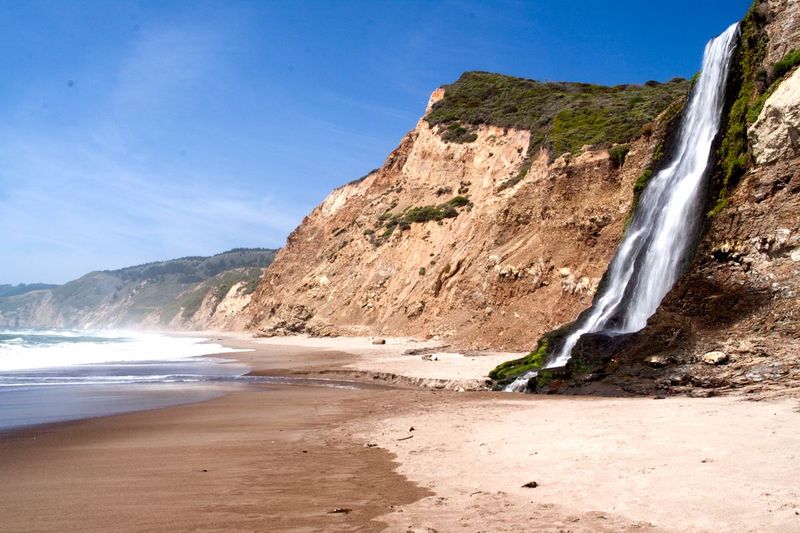
Getting to Alamere Falls requires commitment, roughly eight miles round-trip depending on your chosen route. Nobody accidentally stumbles upon this waterfall during a casual afternoon stroll.
The trail demands decent fitness levels and proper footwear, but you don’t need mountaineering skills. Most hikers complete the journey in four to five hours, including time for photos and jaw-dropping.
Pack snacks, bring water, and prepare your legs for some elevation changes. By the time you arrive, every step feels justified when that waterfall comes into view against the endless blue horizon.
4. The Official Route Winds Past Lakes, Cliffs, And Coastal Views
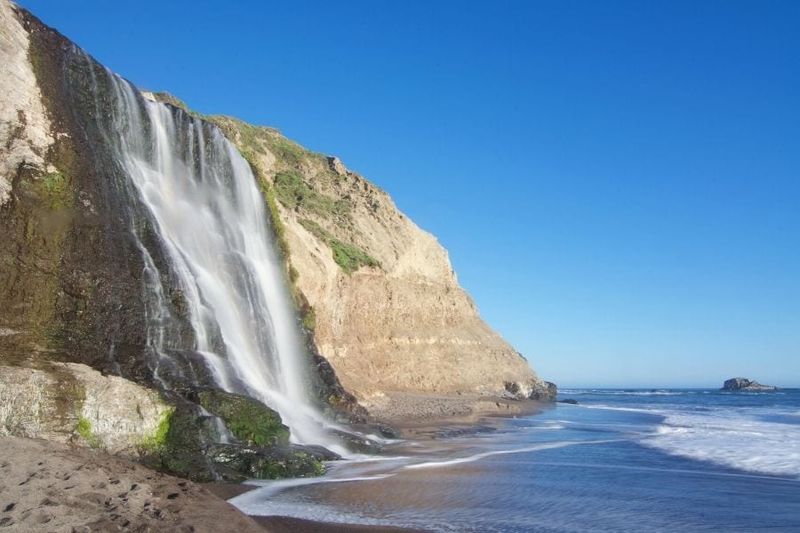
Starting from the Palomarin Trailhead, the official path treats hikers to a greatest-hits collection of Point Reyes scenery. Bass Lake appears early, offering a peaceful spot for quick breaks and bird watching.
As you continue, the trail alternates between forested sections and open coastal bluffs where wind whips through grasses and wildflowers. Pelican Lake follows, then the landscape opens dramatically toward the ocean.
Cliff edges reveal sweeping views that make you forget your tired calves. This route takes longer but delivers constant visual rewards that justify every extra minute spent walking.
5. Wildcat Beach Is The Only Safe Way To Reach The Base
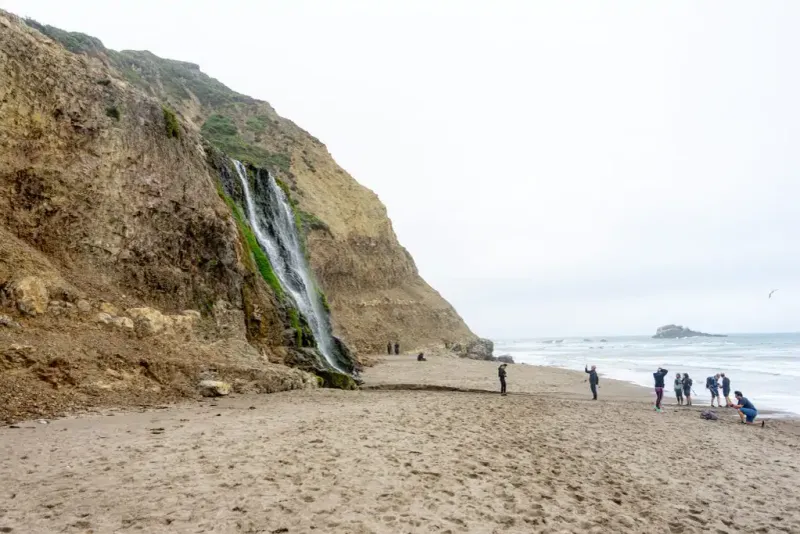
Once you descend to beach level, Wildcat Beach becomes your final stretch toward the waterfall’s base. Walking on sand after miles of dirt trail feels surprisingly refreshing, even if your boots protest.
The beach access provides the safest approach, keeping hikers away from unstable cliff edges and crumbling rock faces. Timing matters here, high tide can block access entirely, trapping eager visitors on the wrong side.
Check tide tables before departing. Low tide opens up the sandy corridor, letting you walk right up to where freshwater meets saltwater in spectacular collision.
6. Planning Around The Tides Is Essential
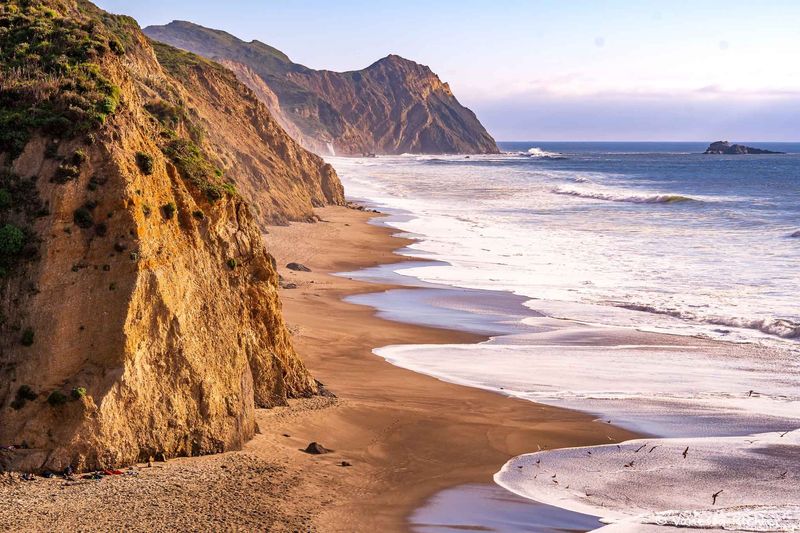
Ignore the tide schedule at your own peril. High tide swallows the beach access, leaving hikers stranded or forcing dangerous detours around impassable sections.
Low tide windows typically last a few hours, giving visitors enough time to reach the falls, snap photos, and return safely. Smart hikers consult NOAA tide predictions before leaving home.
Aim to arrive at Wildcat Beach during mid to low tide for maximum safety and beach access. Getting tide-trapped isn’t just inconvenient, it’s genuinely risky and could ruin your entire adventure faster than you can say stranded.
7. Winter And Spring Bring The Strongest Water Flow
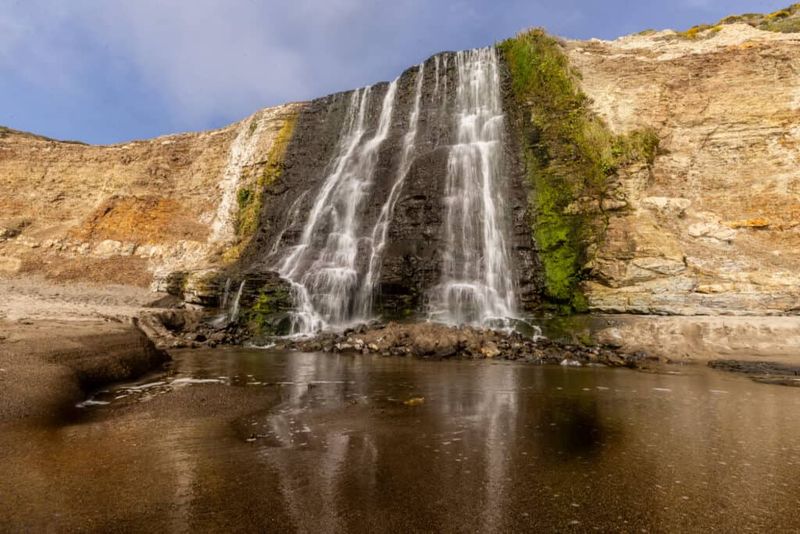
California’s rainy season transforms Alamere Falls from pretty trickle to thundering spectacle. Winter storms fill the watershed, sending maximum volume over the cliff edge between December and April.
Spring extends the show as snowmelt from inland areas feeds coastal streams. The waterfall reaches its most photogenic power during these months, though trails can get muddy and slippery.
Visiting during peak flow means witnessing Alamere at full strength, roaring, misting, and commanding attention like nature’s own stadium concert. Just remember to pack rain gear and embrace potentially soggy conditions.
